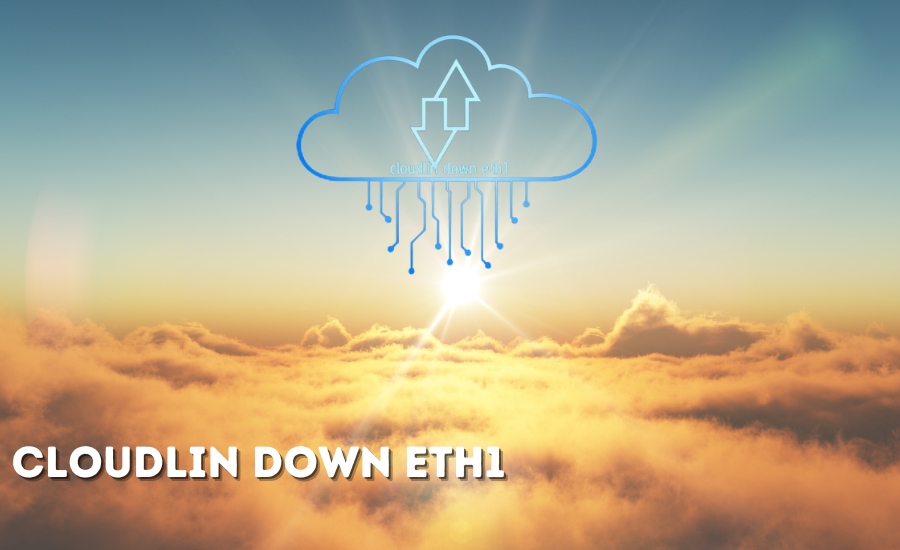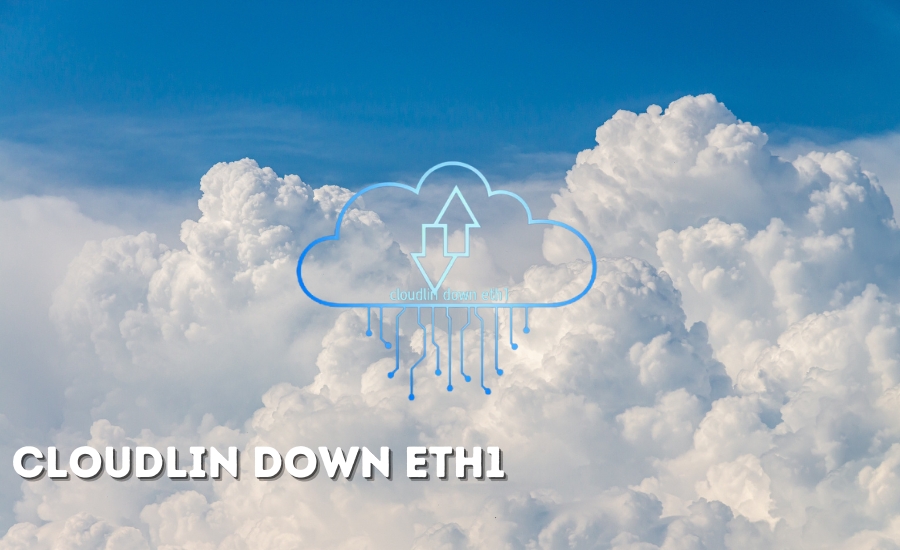Cloud infrastructure is the backbone of modern business, and even minor disruptions in network functionality can lead to significant problems. One such issue that’s been catching attention is the Cloudlin Down ETH1 error. It affects the ETH1 Ethernet interface of a Linux-based server, causing the communication link between data centers to fail. For businesses relying on smooth data transmission, this could mean service outages, operational delays, and potentially even lost revenue.
In this article, we’ll take a deep dive into what causes the Cloudlin Down ETH1 error, how to troubleshoot it, and the preventive measures necessary to avoid recurrence. Whether you’re an IT administrator, a cloud service provider, or simply interested in the tech world, understanding this error can improve network reliability and maintain business continuity.
What Does Cloudlin Down ETH1 Mean?
In a Linux-based cloud infrastructure, “ETH1” refers to the second Ethernet interface on a server or network device. When the ETH1 interface goes down, communication between servers can be disrupted. The Cloudlin Down ETH1 error happens when this network interface stops working correctly, resulting in a failure of data transmission through this port.
ETH1 is vital for network communication in cloud environments. It often handles a significant portion of the data flow between data centers or various sections of the network. So, when this interface malfunctions, it can lead to bottlenecks and delays, which might affect everything from storage systems to hosted applications.
Why ETH1 Is Crucial for Cloud Networks
Most cloud environments utilize Ethernet interfaces like ETH1 to maintain communication between different servers, routers, and storage systems. The failure of ETH1 can affect:
- Data transfers between servers
- Cloud storage access
- Application performance
- Data processing speeds
When the Cloudlin Down ETH1 error occurs, cloud services may slow down or stop entirely, leading to a degraded user experience and operational inefficiencies.
Common Causes of Cloudlin Down ETH1
Several factors can contribute to the Cloudlin Down ETH1 error, and identifying the specific cause is essential for troubleshooting. Here are the most common culprits:
1. Network Congestion and Traffic Bottlenecks
One frequent cause of the Cloudlin Down ETH1 error is network congestion. When too much data flows through the network, it can overwhelm the system, forcing the Ethernet interface to go offline. In cloud environments where thousands of users and devices are communicating simultaneously, even a small spike in traffic can lead to bottlenecks that overwhelm the network.
2. Physical Disconnection or Cable Issues
Loose or damaged Ethernet cables attached to the ETH1 port can cause the network interface to stop functioning properly. Physical disconnections or poorly connected cables may prevent data from flowing correctly through the network. This type of hardware issue is often overlooked but can easily lead to Cloudlin Down ETH1 errors.
3. Outdated or Corrupt Drivers
Drivers are the software components that allow your hardware (in this case, the network interface card) to communicate with the operating system. If the driver associated with ETH1 is outdated or corrupted, the network interface may malfunction. Similarly, changes to the operating system or kernel could introduce compatibility issues that trigger the Cloudlin Down ETH1 error.
4. Hardware Failures
Another possibility is that the network interface card (NIC) itself is faulty or damaged. Over time, components like the NIC can degrade or break down completely, leading to intermittent or complete failures in the ETH1 interface. Hardware issues can be difficult to diagnose, but they are a common cause of network outages.
5. Misconfiguration or Human Error
Simple misconfigurations or incorrect network settings can also cause the ETH1 interface to go down. A wrong IP address, subnet mask, or gateway setting could disrupt the normal functioning of the network. Human error during network setup or maintenance can introduce these misconfigurations, which might not be caught until they cause a problem like Cloudlin Down ETH1.
How to Troubleshoot Cloudlin Down ETH1

If you encounter the Cloudlin Down ETH1 error, follow these troubleshooting steps to diagnose and resolve the issue.
1. Check Physical Connections
Start by verifying all physical connections. Ensure the Ethernet cable is properly connected to the ETH1 interface. If the cable is damaged or looks worn out, replace it with a known, functional one. This simple step often resolves network issues related to hardware.
2. Verify Network Configuration
After checking the physical connections, look at your network configuration settings. Use tools like ifconfig eth1 or ip addr show eth1 to inspect the status of the ETH1 interface. Verify that the IP address, subnet, and gateway settings match the overall network configuration. If you find a discrepancy, correct the misconfigurations and restart the network services to apply the changes.
3. Restart Network Services
Restarting the network services can help bring the ETH1 interface back online. On a Linux system, this can be done by running:
bash
sudo systemctl restart networking
or
bash
sudo /etc/init.d/networking restart
This will reset all network interfaces, including ETH1, and may resolve temporary issues caused by system instability.
4. Update or Reinstall Drivers
Driver-related issues are a common cause of network problems. Check which version of the NIC driver you’re using and compare it with the latest available from the manufacturer. If necessary, download and install the latest driver. Once installed, restart the system to ensure the new driver takes effect.
5. Examine System Logs
System logs can provide valuable insights into what caused the Cloudlin Down ETH1 error. Use the following command to view the system logs:
bash
dmesg | grep eth1
Look for entries that indicate hardware errors, misconfigurations, or other issues related to ETH1. This can help you pinpoint the root cause and make informed decisions on how to fix it.
You May Also like: www-goodmooddotcom-com-cruising-category
Preventive Measures to Avoid Cloudlin Down ETH1 in the Future

To avoid encountering the Cloudlin Down ETH1 error in the future, consider implementing these preventive measures:
1. Implement Advanced Network Monitoring
Advanced network monitoring tools can alert you to issues before they lead to a complete failure. These tools use real-time data to track network traffic, monitor for anomalies, and notify you when something goes wrong. By identifying potential issues early, you can fix them before they escalate into critical failures like Cloudlin Down ETH1.
2. Improve Redundancy and Failover Systems
Redundancy is crucial in preventing service outages. Ensure your network infrastructure includes failover systems that can take over if the ETH1 interface goes down. For example, if ETH1 is handling too much traffic or experiences an outage, ETH0 or another backup interface can seamlessly pick up the load.
3. Regular Audits and Stress Testing
Conduct regular audits of your network configuration to identify vulnerabilities. Periodic stress tests can help ensure that your network can handle surges in traffic without going offline. Identifying and addressing weak points in your system before they cause real issues can minimize the risk of future downtime.
4. Update Hardware Components
Over time, networking hardware such as NICs and cables degrade. Regularly updating and replacing old hardware can help prevent failures. It’s a good practice to perform routine checks on all hardware components to ensure they are functioning optimally.
5. Train Staff to Avoid Human Error
Human error remains one of the leading causes of network outages. Training your IT staff on best practices for network management and keeping them updated on new technologies can help reduce the risk of misconfigurations and errors. Simulation drills that mimic real-world outages can also prepare staff for quick and efficient responses when issues arise.
Conclusion
The Cloudlin Down ETH1 error is a clear reminder of the challenges that come with managing cloud infrastructure. From physical disconnections and faulty hardware to software misconfigurations and human error, multiple factors can cause this critical issue. However, by understanding the root causes and taking a proactive approach to network management—through advanced monitoring, improved redundancy, and regular maintenance—businesses can significantly reduce the risk of future outages.
Keeping your cloud infrastructure robust and resilient is essential for maintaining smooth operations and ensuring customer satisfaction. By addressing vulnerabilities and learning from past mistakes, IT administrators can help businesses avoid the disruptions caused by Cloudlin Down ETH1 and build a more reliable cloud environment.
FAQs
Q: What is Cloudlin Down ETH1?
A: The Cloudlin Down ETH1 error refers to the failure of the ETH1 Ethernet interface on a Linux-based server, disrupting network communication.
Q: What causes Cloudlin Down ETH1?
A: Common causes include network congestion, physical disconnection or cable issues, outdated drivers, hardware failures, and human error.
Q: How can I troubleshoot Cloudlin Down ETH1?
A: Start by checking physical connections, verifying network settings, restarting network services, updating drivers, and reviewing system logs.
Q: What preventive measures can I take?
A: Implement advanced monitoring tools, improve redundancy systems, conduct regular audits, update hardware components, and train staff to avoid human error.
Q: Why is ETH1 so important?
A: ETH1 handles data traffic between servers and cloud infrastructure, and its failure can cause major disruptions to cloud services.
Stay Connected with DenverInsiders for the Latest Blogs

Leave a Reply